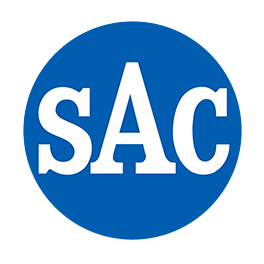On the job
"More flexibility thanks to the robot"
"I'm not a robot farmer and I'm not going to be one," Rogier Lansink said to his wife Heleen a few years back. Despite his words, they installed an automatic milking system and now they wouldn't be without it, Heleen says. "It creates flexibility, not just for Rogier but for me as well. Without the robot I wouldn't be able to do what I'm doing now."
She recently visited England, the US and China, and many more trips to faraway places are planned for the coming year. Heleen Lansink is one of the seven lucky winners of a Dutch Nuffield Scholarship. "I get the opportunity to travel around the world with a research question, and to exchange knowledge and experiences with fellow farmers." It's quite an undertaking for Heleen, who not only works on the farm in Haaksbergen, but also has four children with husband Rogier. "This would never have been possible without the robot," she says firmly. "Rogier can get the job done without bringing in extra labour."
More flexibility
When their children came along, Heleen and Rogier took another good look at their farm's labour needs. "With conventional milking, peak times with the family and on the farm are at the same time each morning and evening," Heleen says. They solved the issue by purchasing an automatic milking system in 2012. "We have a lot more flexibility now." In addition, milking cows twice a day for years takes its toll on the body. "Rogier's knees and shoulders sometimes give him trouble in the milking parlour. You find yourself wondering, "How am I going to make it to 65?"
Rogier and Heleen are in agreement: "The robot is essential for the next few years." The cows were used to it within a few weeks, but it took Rogier a little longer. "You no longer have the cows passing through your hands twice a day; he was afraid that he didn't have control any more and that it would become too technical," Heleen says. But that wasn't the case. "You don't see the good cows any more," Rogier says. He’s now able to focus entirely on the cows that need attention. Incidentally, the decision to buy the SAC robot was very much a conscious one. “Maintenance costs are lower when you have a single arm operating two boxes," says Heleen.
Self-sufficient
Besides robotic milking, they have two other spearheads in their business operations: closed-loop agriculture and outdoor grazing. "We have 85 cows on 50 hectares and we're soil-bound," Heleen says. "The goal is to close the loop of soil, feed, manure and cows using as little as possible from outside the farm." They keep the use of concentrates under control, there is organic bedding in the boxes, and they're experimenting with sorghum cultivation. "2018 made it clear that with our dry soil, we're vulnerable in dry times," Heleen says. "We're looking for alternative crops that are better able to cope with drought." This has meant that the focus of business operations has shifted to the soil. "Rogier is exploring this area," says Heleen, and immediately names a few points of interest. "Soil fertility, separating and upgrading manure, and with those reduced use of fertiliser."
WITH outdoor grazing
As part of the transition, Heleen and Rogier resumed outdoor grazing two years ago. "We were already grazing young cattle and dry cows outdoors, but not the dairy cows. They're outside again now too," says Heleen. She adds that they now have more land, so grazing the cows has become feasible. This was still quite a quest, in combination with robotic milking. In the past year the cows had three hours of outdoor grazing morning and evening. "The field was locked down," Heleen says. It meant that they met the outdoor grazing requirements and, thanks to the lower numbers, the robot was easily able to cope. "It did mean more work for Rogier though, taking the cows there and bringing them back." They've done it differently this year. An automatic grate will allow certain cows to pass through; they will then graze according to the New Dutch Grazing guidelines whereby the cows change field every day. They have been grazing outdoors since the end of March, resulting in an average production of 32.5 litres per cow. Heleen and Rogier are very satisfied with this. "That will bring in some money."
Milk tap and rest area
When your business is so important to society, as Heleen and Rogier's is, the public 'rest area' on their farm seems like a logical development. Walkers and cyclists can buy coffee, tea and squash, and relax for a bit. There's also a milk tap with fresh milk from the farm. "We don't do it as part of a revenue model; the main point is to get the public more involved in the business," Heleen explains. "Then they know where the milk and their food comes from."
A few facts
- SAC RDS FUTURELINE MAX
- 80 dairy cows
- around 32 kg of milk per cow per day
- an average of three visits per cow per day
- an average of 2,500 kg per day
Rogier and Heleen Lansink
Haaksbergen, The Netherlands

